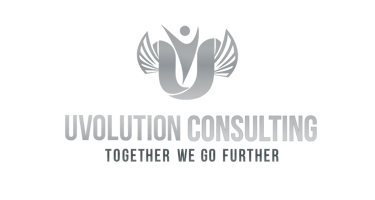Your Company Culture is Killing Your Strategy. Here's the Fix.
Is your company culture killing your business strategy? Learn the 3 silent killers: the Anxious Org, AI Gridlock & Scalability Wall, and get a concrete framework (The Roots & Chains Exercise) to fix it. Book a free Culture Strategy Session to unlock your growth.scription.
Omar Berrada
11/19/20257 min read


“Culture eats strategy for breakfast.”
You’ve likely seen Peter Drucker’s famous quote on a LinkedIn post. But have you ever felt its truth in your gut? That realization that your brilliant, well-thought out, highly debated, and well-funded strategic plan is being silently, systematically dismantled, not even by your competitors, but by your own people and processes.
You’ve done everything right: the presentations are polished, the KPIs are perfectly aligned, and the roadmap is a work of logical art. You present it to your team and see nods of agreement and facial expressions of enthusiasm. Everyone leaves the room knowing exactly what to do.
And then, the reality sets in. The plan doesn't fail in a fiery explosion but rather dies by a thousand tiny, silent cuts. It starts by a missed deadline here because of other priorities. A “we’ll circle back on that” there. A new idea that gets smothered by a seven-layer approval process.
But you thought that everyone agreed on a solid plan but the problem real issue is that your organization’s culture, its human operating system, is fundamentally incompatible with your ambitions. Your strategy is a guest of honour, and your culture just ate it.
Let’s diagnose the three most common ways this is playing out in today’s market.
The Three Most Common Strategy Killers Nowadays
1. The Anxious Organization: When Fear Becomes Your Biggest Operating Cost
Your strategy document is filled with words like “bold,” “innovate,” and “disrupt.” But walk the halls (or scroll the Slack channels). Do you feel that energy? Or do you feel a low hum of anxiety?
The core problem is that economic uncertainty and the rise of "quiet cutting" where companies restructure to push people out without formal layoffs have injected a baseline of anxiety into the workplace. Sell hello to the cultural toxin!
Your strategy demands bold action and employee engagement. But an anxious culture breeds the exact opposite: risk-aversion and paralysis. When employees are fearful for their jobs, the unspoken rule becomes “don't stick your neck out.” They disengage, hesitate on decisions, and prioritize looking busy over delivering real value. Your plan for growth is starved of the one thing it needs most: a team that feels psychologically safe enough to execute it. The culture of fear has become your single biggest operating cost and the biggest drag on your performance.
2. The AI Implementation Gridlock: When Your Bureaucracy Outsmarts Your Biggest Bet
You've announced a bold AI vision to revolutionize your operations. You’ve bought the licenses. You’ve allocated the budget. But six months later, you have nothing to show but a few stalled pilot projects stuck in "pilot purgatory."
Why? Because your culture is built for predictable, siloed execution, not the messy, collaborative experimentation that AI adoption requires.
Your strategy proclaims, "We will be AI-driven!" But your culture through its KPIs, approval chains, and departmental budgets, screams: "Avoid failure at all costs!"
The legal team is rewarded for minimizing risk, not for enabling smart experimentation. The IT department is measured on system stability, not the number of prototypes tested. You’ve created a system where the safest career move for anyone is to slow down, form another committee, and avoid responsibility. Your culture of bureaucratic safety is systematically rejecting the innovative future you're trying to build.
3. The Scalability Wall: When Your Greatest Strength Becomes Your Greatest Weakness
The hands-on, founder-led culture and informal processes that fueled your explosive growth from 5 to 50 employees are now actively preventing you from reaching 200. Everything feels slower from hiring, decision-making, to launching products. The company is being choked by its own past success.
Your strategy is built on empowerment and efficient scaling. But your culture is still hardwired for control. The founder or a small leadership team remains the bottleneck for every significant decision, disempowering managers and creating a logjam of approvals. Talented hires brought in for their expertise become slowly frustrated because they can't act. The cultural norm of “ask the founder” that once provided clarity and speed now guarantees slow-motion and missed opportunities.
Your strategy is ready to scale, but your culture is not!
Your Culture is Your Company's Immune System
These three scenarios are not separate crises. They are different symptoms of the same root cause: an organizational culture that has become misaligned with the driving ambition.
This is what the late MIT professor Edgar Schein captured with his powerful definition of culture as a “pattern of shared basic assumptions that a group has learned as it solved its problems of external adaptation and internal integration.”
In simple terms, your culture is your company’s health on autopilot.
It’s the collection of unwritten rules that answers the questions:
What is truly rewarded here?
What is considered failure?
How do we make decisions when the boss isn't in the room?
Your formal strategy is a conscious command you give, a directive to "fly west." But if your cultural autopilot is programmed to fly east, it will override your command every single time. You can’t shout your way to a new destination. You have to reprogram the system.
The primary purpose of your culture is not to have a fun off-site or a nice values statement. Its purpose needs to be practical: to create the conditions that enable people to work together effectively, adapt, and win in a changing external environment. When it’s not doing that, it’s not a soft skill problem but an existential business threat.
Your Mindshift From Frustrated Leader to Cultural Architect
The critical realization is this: it is rarely your team’s fault, after all, you hired them for a reason. You can blame the limiting system, your culture, that is perfectly designed to deliver the results you are currently getting.
The anxiety, the gridlock, the bottlenecks, are not character flaws in your employees.
You can see them as the logical, predictable outputs of your current cultural code. Your people are simply responding to the environment you have helped create.
The shift required is to move from being a victim of your culture ("Why won't they just execute?") to becoming its intentional architect. This is the core work of leadership in the 21st century. It’s not about writing a new values statement and calling it a day. You need to deliberately rewire the assumptions, behaviours, and systems that dictate how work actually gets done.
Your Culture Reprogramming Toolkit: The "Roots and Chains" Exercise
Understanding the problem is the first step. Taking action is the next. This simple but powerful exercise, which I use with my clients, will help you move from diagnosis to a concrete plan. You can do it in your next leadership team meeting.
The Goal: To visually separate the cultural elements that propel you forward (Roots) from those that hold you back (Chains).
How It Works:
Gather your leadership team with a whiteboard or a virtual canvas.
Draw a large tree. Below the ground, you have the roots. Above, a pair of broken chains.
Lead a candid discussion using the directives below.
Part 1: Identify Your "ROOTS" (The Vital Cultural Strengths)
These are the core assumptions and behaviors that are essential to your identity and past success. They are your foundation. Prompt: "What are the core values, behaviors, and beliefs from our past that we must absolutely preserve? What makes us, 'us'? What helps us win?"
Examples: "Our hustle and ability to pivot quickly." "Our deep sense of accountability and ownership." "Our commitment to customer service above all else."
Part 2: Identify Your "CHAINS" (The Cultural Barriers)
These are the ingrained assumptions and behaviors that are now holding your strategy hostage. They are the constraints you need to break. Prompt: "Looking at our strategic goals, what specific cultural habits are slowing us down? What behaviors do we see that conflict with where we need to go?"
Examples: "The chain of 'asking the founder' for every decision." "The chain of departmental silos where we don't share information." "The chain of punishing any failure, which kills experimentation."
This Exercise is a Game-Changer:
It's Tactile and Visual: It moves an abstract concept ("culture") onto a concrete canvas, making it easier to discuss.
It Balances Change with Continuity: It acknowledges that not everything needs to change, which reduces defensiveness and makes the team more open to ditching the "chains."
It Creates a Clear Action Plan: By the end of the session, you don't just have a list of problems. You have a prioritized list of "Chains" to break, turning cultural change from a vague concept into a tangible project.
Your Assignment:
From your "Chains" list, pick ONE to focus on for the next quarter. Just one. For example, if "punishing failure" is a chain, your project is to "Build a culture of smart risk-taking." Every initiative, meeting, and communication should be geared towards breaking that single chain.
Your First Step: A Single, Actionable Tactic
This work can feel overwhelming, but it starts with a single, deliberate intervention. Don't try to change everything at once. Pick one of the three killers and challenge it with a tangible action.
If you face The Anxious Organization: In your next team meeting, publicly reframe a recent small failure as a learning opportunity. Say, "The outcome wasn't what we wanted, but the team learned X and Y, which makes us smarter. Thank you for taking the initiative." This directly challenges the culture of fear and starts to build psychological safety.
If you face The AI Gridlock: Empower a small, cross-functional team with a tiny budget and a 30-day deadline to solve one micro-problem with a new AI tool. Their only deliverable is a 5-minute show-and-tell of what they learned, whether they succeeded or failed. This creates a safe space for experimentation outside the bureaucratic machinery.
If you face The Scalability Wall: Identify one type of decision that currently lands on your desk and delegate it completely to a direct report. Give them clear boundaries and the authority to act, and promise you will not second-guess them. This is the first step in breaking the bottleneck and building a culture of empowerment.
Ready to Move from Diagnosis to Action?
You've identified the cultural barriers. Now, let's pinpoint your single most powerful leverage point.
Book a complimentary 30-minute Culture Strategy Session with me. In this focused call, we will:
Diagnose the root cause of one specific strategic initiative that's stalled.
Identify the single most impactful cultural shift you can make to get it back on track.
Outline a clear 3-step action plan to make it happen.
We will have a focused consultation to give you a strategic insight and a concrete next step.
Let's unlock your strategy's potential, together.


